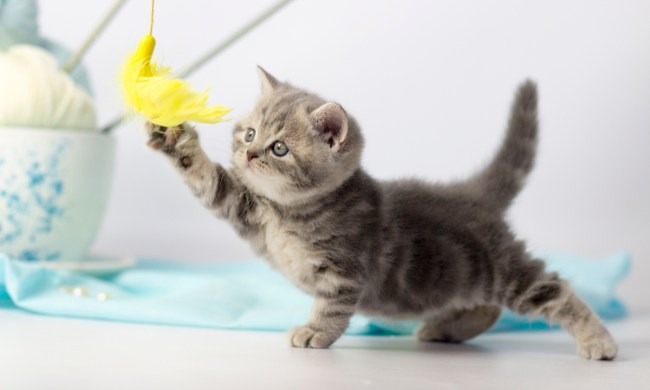Whether you’re flying or driving during your next trip, it’s important to find a carrier that keeps your cat safe. Many car carriers aren’t designed for plane travel, and they might not meet airline requirements, meaning you have to buy a second carrier if you plan to fly. That’s inconvenient and unnecessary — at least, that’s if you buy a carrier that’s versatile enough for travel by both plane and car. The following top carriers not only have fantastic reviews, but they’re designed for both plane and car travel. Plus, when you need to take your cat on quick local trips, like to the vet, they’ll do the job, too.
Best for flat storage
The Pet Magasin Soft-Sided Airline-Approved Dog and Cat Carrier Bag features a lightweight design paired with internal padding and mesh windows, so your pet can stay comfy during the flight or in the car. The carrier features a handle and a padded shoulder strap, making it easy and comfortable to carry through the airport. A waterproof outer material keeps your cat safe and dry, even in bad weather, while end panels hold their shape so the carrier doesn’t collapse down.
When you’re done using it, this carrier folds up flat for easy, space-saving storage.
Best hard-sided cat carrier
The Petmate Vari Dog and Cat Kennel is a hard-sided carrier that meets USDA and IATA pet travel requirements, so it’s a great choice whether you plan to fly or drive. The kennel is equipped with a squeeze latch door for secure travel. Side and rear ventilation ensure your cat gets plenty of air, while a seatbelt loop notch on the top lets you easily buckle your cat into place for extra safety.
Assembling this carrier is easy, and the plastic quickly wipes clean. There’s even an internal moat, so if your cat does have to relieve himself during a long trip, he’s able to stay up and out of the mess. The carrier is available in three sizes, so you can choose the size that’s just right for your cat.
Best stylish cat carrier
If you’re looking to impress, the Mr. Peanut’s Airline Approved Soft Sided Pet Carrier is bound to turn heads. This distinctive-looking carrier is available in multiple stylish colors, and its sophisticated design will have you and your cat looking polished, whether you’re strolling through the airport or getting in and out of the car.
This carrier features a plush faux fleece padding to keep your cat comfy, while breathable mesh windows on the top and four sides maximize ventilation. A zippered pocket is perfect for treats and other must-haves, while a padded shoulder strap and carry handle make for comfortable and easy transportation. This carrier even has automatic self-locking zippers that can’t be opened from inside, so it can help to keep your cat from escaping.
Best expandable cat carrier
Whether you’re flying or driving, your cat can use a little extra space to stretch out during a long trip. The Mr. Peanut’s Expandable Airline Approved Soft Sided Pet Carrier offers that capability. This carrier features a size that, when unzipped, expands into an extra space for your cat, allowing him to sleep more comfortably and easily turn around.
This carrier also features a ventilated top, meaning it meets the regulations of most major airlines. There’s also mesh on all four sides of the carrier, so your cat can see what’s going on and will get plenty of fresh air. The travel bed is removable, and the carrier has a plywood base that gives your cat support. There’s a zippered storage pocket for your essentials, including plenty of treats, and there are also seatbelt attachments if you choose to drive.
Best carrier for in-cabin travel
The Sherpa Original Deluxe Lattice Stitch Travel Bag Pet Carrier is designed to meet the strict requirements for carriers used for in-cabin travel. This airline-approved carrier features a spring wire frame that can be pushed down, allowing it to fit underneath airplane seats. It also features mesh sides that allow for plenty of ventilation, while a top and side entry option makes it easier to get your cat into the carrier.
The carrier’s locking zippers help to prevent escapees. The base liner is removable and machine washable for easy cleaning, and the base is waterproof, just in case of any accidents. When you’re not flying, this carrier doubles as a soft-sided crate or carrier for trips around town and to the vet.
When you’re choosing a carrier and are planning to fly, always confirm that the carrier meets the requirements of the airline that you plan to use. Different airlines have different requirements, and requirements for in-cabin travel can also vary from cargo travel specifications. To get the most use out of your carrier, look for one that isn’t only suitable for use when you fly, but that’s also convenient enough to use during shorter trips, like visits to the vet. Investing in a good, versatile carrier is a great choice, especially since it can help to keep your cat safe and comfortable, so your trip is less stressful for your best friend.


